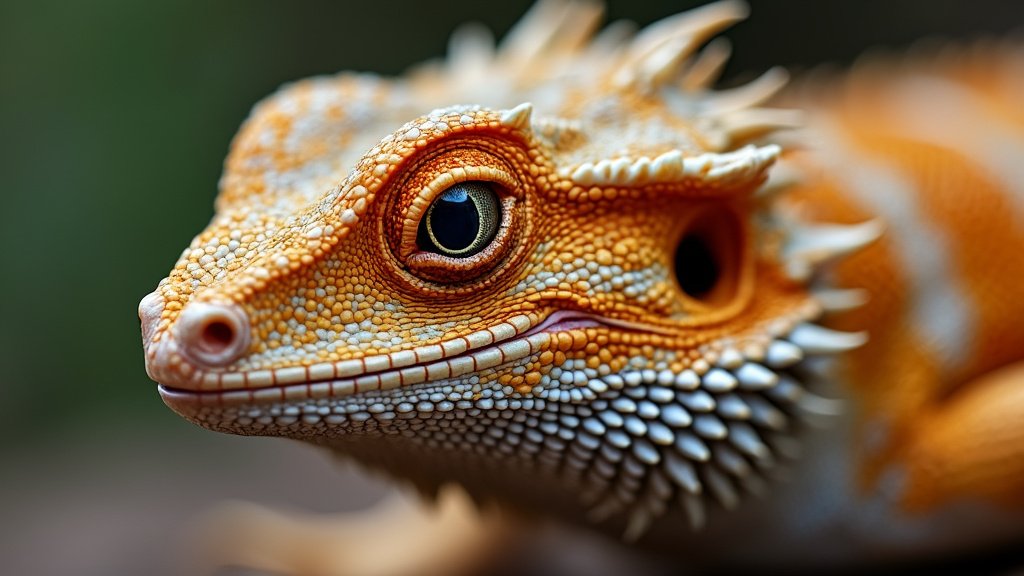If you’ve ever had the pleasure of owning a bearded dragon, you’ll know they are fascinating creatures with unique care needs. One of the most critical, yet often misunderstood, aspects of their care is shedding. To ensure your scaly friend stays healthy and happy, it’s vital to recognise the signs of shedding in bearded dragons. In this comprehensive guide, we’ll delve into everything you need to know about the shedding process, covering key signs, stages, and practical tips.
Understanding Bearded Dragon Shedding
Before diving into the signs, let’s first understand why bearded dragons shed their skin. Just like snakes, bearded dragons grow throughout their lives, and their outer skin doesn’t stretch. As they grow, they periodically shed their old skin to accommodate their new, larger selves. This natural process can be slightly different for each bearded dragon, but typical signs are often easy to spot.
Frequency of Shedding
The frequency of shedding largely depends on the age of your bearded dragon.
- Juveniles: Younger bearded dragons shed quite frequently, sometimes as often as every few weeks. This is because they grow at a much faster rate.
- Adults: As they get older and their growth slows, the frequency of shedding decreases. Adult bearded dragons may shed only a few times a year.
Main Signs of Shedding in Bearded Dragons
Recognising the signs of shedding early can help you manage the process more effectively. Here are the main indicators to watch for:
Change in Skin Colour
One of the most obvious signs that your bearded dragon is about to shed is a change in their skin colour. Their skin will often appear duller and paler compared to its usual vibrant hue. You may also notice patches where the skin looks particularly faded.
Behavioural Changes
Shedding can be an uncomfortable process for bearded dragons, leading to:
- Restlessness
- Decreased appetite
- Increased scratching against objects
From my personal experience, one of my bearded dragons, Draco, would often refuse his favourite mealworms when he was about to shed. It’s essential to monitor these behavioural changes closely to ensure there’s no underlying health issue.
Physical Changes
There are several physical signs that your dragon is about to shed:
- Loose Skin: You may notice patches of loose skin, especially around the limbs, tail, and head.
- Eye Bulging: It can be quite alarming, but sometimes their eyes bulge slightly as they prepare to shed the skin around their face and eyes.
Practical Tips for Helping Your Bearded Dragon Shed
The shedding process can be stressful for both the bearded dragon and the owner. Here are some practical tips to ease the process:
Hydration and Humidity
Maintaining appropriate hydration levels is crucial. Ensure your dragon has a shallow water dish for bathing, and consider misting the enclosure to help with humidity. However, avoid overly damp conditions as this can lead to respiratory issues.
Bathing
During shedding, giving your bearded dragon a warm bath can help loosen the skin. From my own experience with several dragons, a 15-minute soak in lukewarm water can make a world of difference. Gently rub the areas with loose skin to help remove it, but never force it off.
Proper Diet
A well-balanced diet rich in vitamins and minerals can facilitate a smoother shedding process. Vitamin A, in particular, is known to be beneficial.
Avoid Handling
During shedding, your bearded dragon might be more irritable and sensitive. Try to minimise handling to reduce stress.
Enclosure Setup
Ensure the enclosure has rough surfaces like branches and rocks where your dragon can rub against to aid with the shedding process.
When to Seek Veterinary Care
While shedding is a natural process, sometimes complications can arise. If your bearded dragon has patches of skin that refuse to shed, or if you notice any unusual symptoms like swelling or sores, consult a vet immediately. Stuck sheds can restrict blood flow and lead to serious health issues.
Conclusion
Understanding the signs of shedding in bearded dragons and knowing how to help them through the process can make a significant difference in their overall well-being. By paying attention to changes in skin colour, behavioural clues, and other physical signs, you can ensure your bearded dragon has a comfortable and successful shed. Remember, if you’re ever in doubt, a vet visit is always the best course of action to ensure your pet’s health and happiness.
For more detailed information on bearded dragon care, check out our Complete Guide to Bearded Dragon Husbandry or visit this comprehensive resource on exotic pet care.
Meta Description
Recognise the signs of shedding in bearded dragons and learn practical tips for helping your pet through this natural process. Ensure your bearded dragon’s health with our expert advice!
Whether you’re a new bearded dragon owner or a seasoned reptile enthusiast, understanding the shedding process is crucial to providing the best care for your scaly friend. Keep these tips handy, and you’ll be well-equipped to support your pet through every shed. Happy dragon caring!

